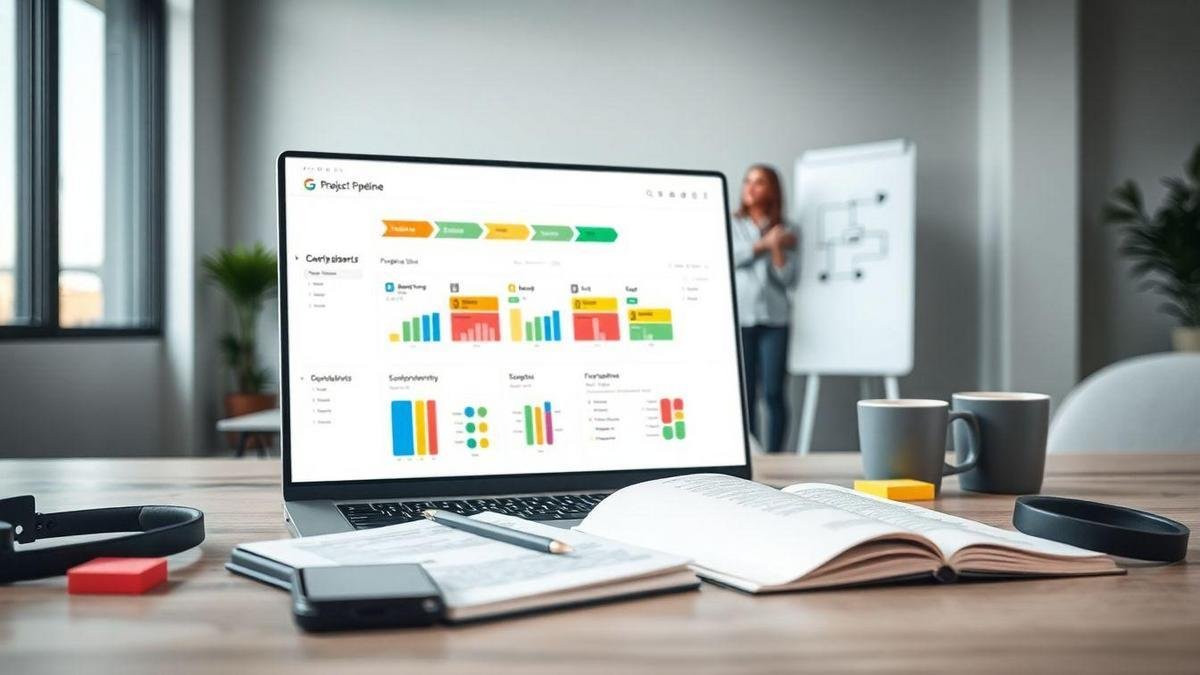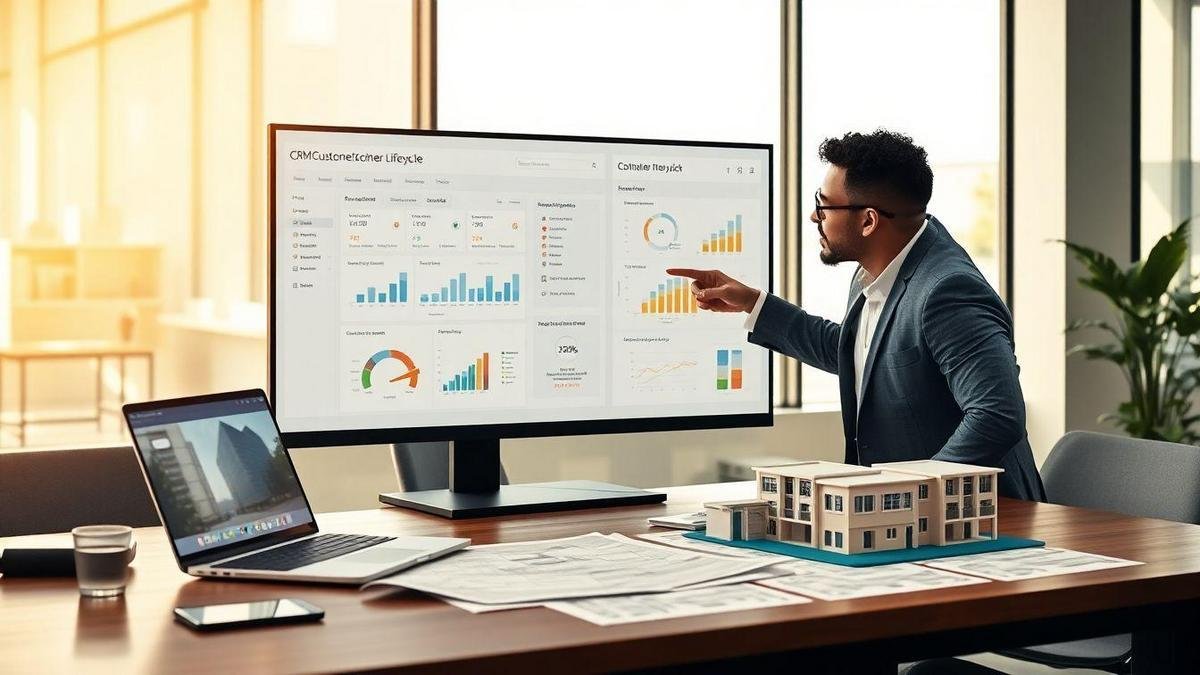CRM systems for real estate developers
CRM systems for real estate developers show how to capture leads, score interest and budget, and automate assignment and follow-up. They unite project pipelines, link units with budgets and timelines, and flag pipeline health. When synced with ERP, marketing, and accounting, data stays real time. A developer-grade CRM manages sales, presales, site acquisition, construction handovers, and the customer lifecycle — delivering dashboards and KPIs that prove ROI and speed conversions. This guide walks through selection, integration, and measurement.
Key takeaway
- Developers use CRM systems for real estate developers to capture and organize all leads.
- Track deals through the sales pipeline and forecast sales.
- Automate follow-ups and SLA timers to keep prospects engaged.
- Integrate CRM with listings, contracts, and finance tools for a single source of truth.
- Use dashboards and KPIs to prove ROI and improve decision-making.

Developer lead management: CRM systems for real estate developers
A CRM built for developers moves leads from curiosity to contract. It ties marketing, sales, and brokers into one clean view so the team sees who is hot and who needs a nudge. That cuts wasted time and boosts conversion.
Capture leads from web, events, and agents
Think of lead capture like a fishing net: the wider and smarter the net, the more fish.
- Website forms with field-level tracking (unit interest, budget, timeline). See how optimizing forms and landing pages increases inbound quality with effective website optimization for leads.
- Chatbots and live chat that tag conversations and push them to the CRM.
- Landing pages and paid ads that feed leads directly to lead lists; combine with targeted campaigns from PPC advertising that sells.
- Event QR codes and badge scans at launches and expos; follow-up strategies for scanned contacts pair well with AI-powered retargeting campaigns.
- Agent and broker portals for fast buyer submissions.
- Import CSVs from open-house sign-ins and partner lists; coordinate imports with a slate of lead generation tools.
Example: A mid-size developer used QR codes at an open house and put each scan into the CRM. Within an hour, an agent called the top five and closed two deposits that week. Quick capture = quick wins.
Score and qualify leads by interest and budget
Lead scoring focuses time on the right prospects.
- Assign points for interest: unit type, floor, view, amenities.
- Add points for budget: pre-qualified, self-reported range, mortgage-ready.
- Score for timeline: immediate buyer, 3–6 months, 6 months.
- Combine behavior signals: site visits, brochure downloads, repeated chat; leverage predictive analytics to refine behavior signals.
- Set thresholds: route hot leads to sales, nurture warm leads with drip emails.
Simple categories:
- Hot lead: high score, high budget, ready to buy.
- Warm lead: some interest, longer timeline.
- Cold lead: low engagement, long-term nurture.
Rule of thumb: the higher the score, the faster an agent calls. To raise conversion rates across scoring and follow-up, review practical tactics in how to increase real estate conversion rates.
Automate lead assignment and follow-up
Automation hands the baton to the right runner at the right time.
- Routing rules by project, zone, language, or agent performance.
- Round-robin or priority assignment for fairness and speed.
- Auto-creation of tasks: call, send brochure, schedule viewing.
- SMS and email templates with merge fields for personalization—pair templates with best practices from email marketing for real estate sales.
- SLA timers and alerts so no lead sits beyond the target response time.
Response-time guide:
| Channel | First response time | Tip |
|---|---|---|
| Website chat | < 5 minutes | Live chat converts best; auto-assign to on-duty agent. |
| Event scan | < 1 hour | Send a thank-you SMS and schedule a call. |
| Agent submission | < 4 hours | Route to local sales rep for quick meet-up. |
Automation keeps follow-up sharp and frees agents to sell, not chase.

Project pipeline: CRM systems for real estate developers to track progress
A project pipeline CRM gives developers a single source to track progress from blueprint to handover. It ties sales, construction, and finance in one place — turning scattered spreadsheets into a shared picture. For developer-specific CRM features and comparisons, review options in best CRM choices for land and developers.
Visualize stages from planning to handover
- Use a visual board (Kanban or timeline) with stages: Planning, Permits, Construction, Sales, Handover.
- Show each project as a card with key facts: unit count, start date, expected handover.
- Color-code stages: green (moving), yellow (caution), red (needs action).
- Add links to blueprints, contracts, and photos for quick context.
Example: A manager sees a project stuck in Permits, calls the team, and clears the hold in an hour.
Link units, budgets, and timelines in one view
- Map each unit to its budget and timeline on the same screen.
- Display totals and variances: planned vs actual cost and date.
- Filter by block, unit type, or sales stage.
- Set dependencies so delays propagate to related sales milestones.
Setup steps:
- Import unit list and contract values.
- Attach budget lines to each unit.
- Enter milestone dates for each phase.
- Turn on live updates from construction reports and ERP feeds.
If you’re comparing CRM platforms for developers and land teams, see feature breakdowns in best CRM for land developers.
Monitor pipeline health with flags
- Define flags: Green (on time, on budget), Yellow (minor delay/drift), Red (major delay or legal hold).
- Add quick actions: assign owners for Yellow, create mitigation plans for Red.
- Use daily or weekly snapshots and automate alerts for changes.

CRM integration for real estate development
CRM integration moves deals faster and cuts errors. For real estate teams, linking systems is like connecting tracks in a railyard: data must flow without crashes. Good integration links sales, marketing, finance, and operations so everyone sees the same facts.
Sync CRM with ERP, marketing, and accounting
Syncing the CRM with ERP, marketing platforms, and accounting creates a single source of truth.
Benefits:
- Faster sales cycles
- Cleaner financials
- Better campaign ROI
- Less manual work
Quick setup:
- Map core records (contacts, projects, units, invoices).
- Decide the system of record for each field.
- Set sync frequency (real-time, hourly, daily).
- Test with a small dataset and monitor logs.
Integrations make it easier to measure impact; tie integration work back to overall marketing return using a framework like real estate marketing ROI.
Use APIs and middleware for data flow
APIs are the pipes; middleware is the pump.
When to use APIs:
- Public APIs available and secure direct connections required.
- Need custom data transforms.
When to use middleware:
- Multiple systems need orchestration.
- Prefer low-code connectors and require logging/retries.
Core practices:
- Authenticate with tokens or OAuth.
- Use versioned endpoints and retry logic.
- Keep payloads focused and log every sync for audits.
Middleware often handles queuing and mapping with less developer work.
Ensure real-time updates and reduce duplicates
Techniques:
- Use webhooks to push changes instantly.
- Implement event queues for high volume.
- Prefer delta updates over full dumps.
Prevent duplicates:
- Match on unique IDs (email, tax ID, contract number).
- Normalize data (trim, lowercase).
- Use merge rules with human review and flag suspected duplicates.
Many CRM systems for real estate developers support these patterns out of the box. Assign clear ownership for each record to keep data reliable and combine with your lead-generation tooling like specialized lead tools to keep feeds clean.

Sales and presales: CRM systems for real estate developers to streamline deals
For developers, CRM systems for real estate developers act like a control tower: they guide leads from first curiosity to signed contract. The goal is speed — reduce approval lag and give sales teams one source of truth. A good system ties quotes, options, approvals, showroom visits, and follow-ups into a smooth flow.
Manage quotes, options, and customer approvals
Core capabilities:
- Create and send quotes quickly from templates.
- Track option selections (parking, finishes, upgrades).
- Capture digital customer approvals.
- Version control for price lists and contract drafts.
- Audit trail for compliance and legal checks.
Workflow:
- Sales rep builds a quote from a template.
- Customer receives quote and selects options.
- Digital signature triggers internal approvals.
- Contract auto-generates and stores in the client record.
Benefit: faster approvals, less rework, clear accountability. For vendor selection and template support, see CRM choices tailored to land and development teams in best CRM for land developers.
Track presales interactions and showroom visits
- Capture visit check-ins, rep notes, and customer preferences.
- Log marketing source and follow-up tasks.
- Lead scoring from interaction history.
Typical flow:
- Prospect scans a QR or signs in at the showroom.
- CRM links the visit to the lead profile.
- Rep records demo details and selected units.
- System schedules follow-ups and flags hot leads.
Quick wins: better handoffs, higher conversion from timely follow-ups, and reports that show which displays sell; pair visits with outreach tactics from video marketing that converts.
Standardize sales scripts and templates
Items to standardize:
- Opening lines and qualifying questions.
- Objection responses (price, timing, financing).
- Quote/contract templates and option forms.
- Email sequences for follow-ups.
Store templates in the CRM library, require use for first calls and demos, and track which versions convert best. Consistency builds trust and speeds decisions; align scripts with your brand voice described in real estate branding strategy.

Customer lifecycle: CRM systems for real estate developers
Treat the buyer journey like a relay race: every handoff matters. CRM systems for real estate developers collect touchpoints, track progress, and keep owners coming back.
Map stages from inquiry to post-sale service
- Lead capture: source, quick qualification within 24 hours.
- Tour and nurturing: schedule visits, share floorplans and videos.
- Offer and contract: track negotiation notes and financing approvals.
- Handover: confirm inspections, keys, and warranties; record photos.
- Post-sale service: warranty requests, maintenance logs, community updates.
Tag stages with status and an owner; use color codes to spot issues quickly.
Capture owner data for long-term engagement
Collect:
- Contact details and preferred language.
- Property details (unit, floor, amenities, purchase date).
- Financial info (payment plan, mortgage status).
- Service history (repairs, complaints, vendors).
- Behavior signals (newsletter opens, event attendance).
Refresh records every 6–12 months and store consent/opt-outs clearly.
Trigger lifecycle campaigns for upsell and referrals
Segment owners by age of ownership, unit type, and engagement score.
Triggers:
- 3 months post-handover → maintenance tips service offer.
- 12 months → anniversary message referral incentive.
- After service → cross-sell upgrades.
Campaign examples: offer premium parking after usage patterns appear; limited-time referral credits; invite owners to exclusive previews. Use targeted outreach methods from remarketing and retargeting strategies and combine with timely email sequences from email marketing best practices. Measure open rates, conversions, and referral counts and iterate.

CRM analytics and reporting for developers
CRM systems for real estate developers provide a clear window into sales and marketing performance — a GPS for projects. Dashboards and reports turn guesswork into action.
Dashboards for leads, sales, and revenue by project
Key widgets:
- Lead velocity by source
- Sales closed by project
- Revenue by phase or building
- Active deals and stage distribution
Benefits: faster decisions, fewer missed opportunities, clear accountability. Connect CRM to project lists and campaign sources; filter by date, project, and agent; set alerts for dips in leads or revenue. Use dashboard metrics to tie activity back to marketing spend and evaluate marketing ROI.
Custom reports for conversion rates and cycle time
Useful reports:
- Lead-to-visit conversion by source
- Visit-to-contract conversion by agent
- Average cycle time from lead to contract by project
- Funnel drop-off points
Use these to find leaks and fix processes. Example: moving follow-ups to same-day replies cut one developer’s cycle time by a third. For deeper funnel analysis, compare findings with frameworks in the real estate sales funnel and tactics in conversion improvement guides.
KPIs to improve sales and marketing decisions
| KPI | What it shows | Sample target |
|---|---|---|
| Lead Volume | New leads per project | 200/month |
| Lead-to-Visit Conversion | Percent of leads that visit | 30% |
| Visit-to-Sale Conversion | Percent of visits that close | 12% |
| Average Cycle Time | Days from lead to contract | 45 days |
| Revenue per Lead | Revenue divided by number of leads | $1,200 |
Track KPIs with alerts and tie bonuses to measurable targets. Compare Revenue per Lead with Lead Volume to spot quality issues.

Site acquisition and stakeholder CRM
Site acquisition is a chess game; a stakeholder CRM keeps the board visible. CRM systems for real estate developers consolidate land contacts, approval statuses, and due diligence into one record, speeding decisions and reducing missed chances.
Track land contacts, approvals, and due diligence
Track:
- Contacts: name, role, phone, email, ownership share, notes.
- Approvals: planning status, permit types, expiry dates, conditions.
- Due diligence: title search, environmental reports, zoning memos.
Process:
- Create a site record for each parcel.
- Attach contacts and tag by role.
- Log approval milestones with document links.
- Add due-diligence checklists with owners and deadlines.
- Run weekly reports to spot stalls.
For CRMs that support land and site workflows, see comparisons in best CRM for land developers.
Log communications with agents, lawyers, and officials
- Timestamped entries for calls, emails, and meetings.
- Summaries with decisions, next steps, and owners.
- Tags for quick filtering: agent, lawyer, official, urgent.
- Templates for common notes (offer, counter, approval request).
Clear logs preserve context and prevent miscommunication.
Centralize documents and meeting notes
- Folder structure: Site > Due Diligence / Permits / Contracts / Meetings.
- Naming rules: YYYYMMDDTypeAuthor for clarity.
- Access controls by role and version notes for changes.
Central folders speed audits, handovers, and regulator requests.

Construction and delivery: CRM systems for real estate developers
A construction-aware CRM ties site events to customer touchpoints, records issues and warranties, and gives field teams mobile tools to act.
Link construction progress to buyer communications
- Log milestones: foundation complete, roof on, final inspection.
- Automated buyer alerts: personalized emails or SMS for key milestones.
- Photos and short videos attach to milestones for transparency—combine these with visual content strategies from video marketing best practices.
- Approval workflows ensure procurement, quality, and sales sign-off before notifying buyers.
Record site issues, warranties, and handover tasks
- Issue logging with photos, tagged locations, and severity.
- Warranty tracking with start dates and coverage periods.
- Handover checklists: keys, manuals, utilities, snag lists with owners and deadlines.
Workflow example:
- Field technician logs a defect with photo and location.
- System assigns repair to a subcontractor.
- QA approves the repair and the CRM closes the defect.
- Buyer receives closure confirmation.
Coordinate field teams with mobile CRM access
Mobile features:
- Offline access for low-signal sites.
- GPS-tagged tasks for easy navigation.
- Push notifications for urgent changes.
- Quick inspection forms to reduce typing.
Mobile-first deployment matters for field teams; see why mobility is critical in mobile-first real estate strategies.

Choosing and measuring ROI of CRM systems for real estate developers
Selecting a CRM is about fit, not flash. Balance vendor fit, costs, and time to value while keeping an eye on clear ROI.
Evaluate vendor fit, costs, and implementation time
Start with clear goals: higher lead conversion, faster follow-ups, or fewer manual tasks.
Check vendor fit:
- Real-estate experience and developer workflows.
- Integrations with listings, marketing automation, and finance systems.
- Local support, language, and timezone coverage.
Compare costs:
- Upfront license and customization fees.
- Recurring subscription and add-on costs.
- Hidden costs: data migration, training, third-party connectors.
Assess implementation:
- Timelines for similar clients.
- Required internal resources and vendor project management.
- Phased versus big-bang rollout trade-offs.
Selection steps:
- Define must-have workflows and KPIs.
- Shortlist 3–5 vendors with real estate references.
- Request demos using real data or scenarios.
- Get a 3-year TCO estimate.
- Confirm SLAs, training, and a launch calendar.
Vendor shortlists and practical buying advice are covered in best CRM for land developers — buying guide.
Measure adoption, sales lift, and reduced manual work
If the team does not use the tool, nothing else matters.
Track adoption:
- Daily active users and role-based usage.
- Percentage of leads entered and updated in CRM.
- Time to first contact logged.
Track sales lift:
- Conversion rate by source pre/post CRM.
- Average deal velocity and closed value per month.
Track reduced manual work:
- Hours saved per role on reporting and data entry.
- Number of automated workflows versus manual steps.
KPI examples to measure:
| KPI | What to measure | How to measure |
|---|---|---|
| Adoption rate | Active users / total licensed | CRM usage logs weekly |
| Lead conversion | Closed deals / leads | Compare 3 months pre/post |
| Time saved | Hours/week per role | Time logs or surveys |
| Sales lift | % change in revenue | Revenue comparison by cohort |
| Payback period | Months to recover cost | Total cost / monthly net benefit |
Example: A sales manager saw conversion rise from 4% to 6% after automation and reminders — paying for the system within six months. Tie these operational gains back to marketing spend to prove value using a marketing ROI approach from real estate marketing ROI.
Run pilots and track payback period
Run a 60–90 day pilot with a single team or project.
Pilot steps:
- Baseline KPIs.
- Configure minimal viable workflows.
- Train the pilot team and start the clock.
- Monitor weekly and tweak automations.
- Roll or stop based on results.
Calculate payback:
- Payback = Total pilot cost / Monthly net benefit. Example: $9,000 pilot cost ÷ $1,500 monthly net benefit = 6 months payback.
Why CRM systems for real estate developers matter
CRM systems for real estate developers centralize complexity: leads, units, budgets, timelines, documents, and stakeholder communications. They reduce manual work, improve transparency across teams, and create measurable sales and operational improvements. When chosen and implemented correctly, the CRM becomes the engine that accelerates deals and improves customer satisfaction.
Conclusion
A good CRM is the developer’s backbone. CRM systems for real estate developers capture leads, score interest and budget, automate assignment and follow-up, and create a single source of truth across sales, construction, and finance. They speed conversion, reduce errors, and tighten handovers. Dashboards and KPIs make performance visible and prove ROI.
Pick a tool for fit, not flash: shortlist vendors with real-estate experience, test integrations, run a pilot, and measure adoption, sales lift, and payback period. Protect data quality, assign record ownership, and keep sync rules simple. Do this and the CRM stops being a nice‑to‑have and starts paying its way.
For more practical guides and real-world examples, visit RealHubly.

No responses yet